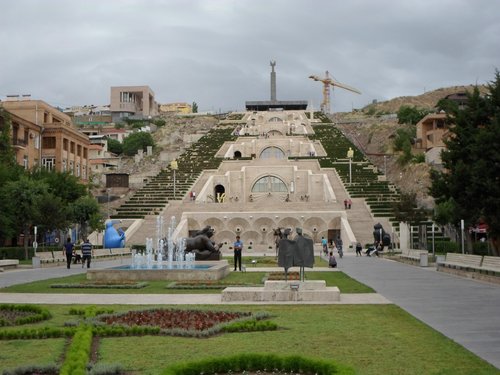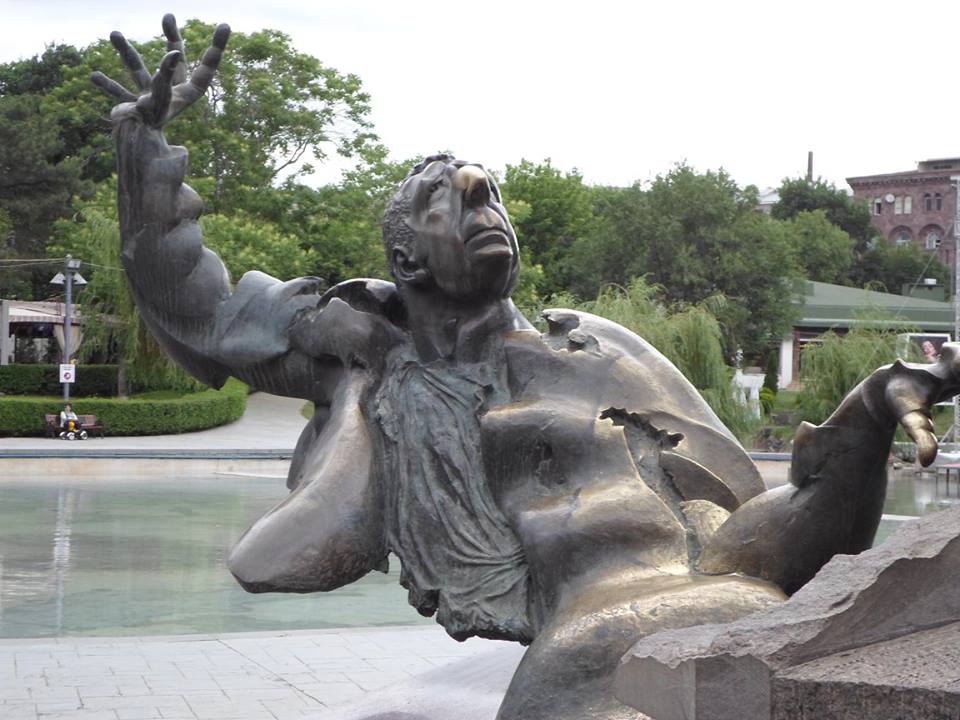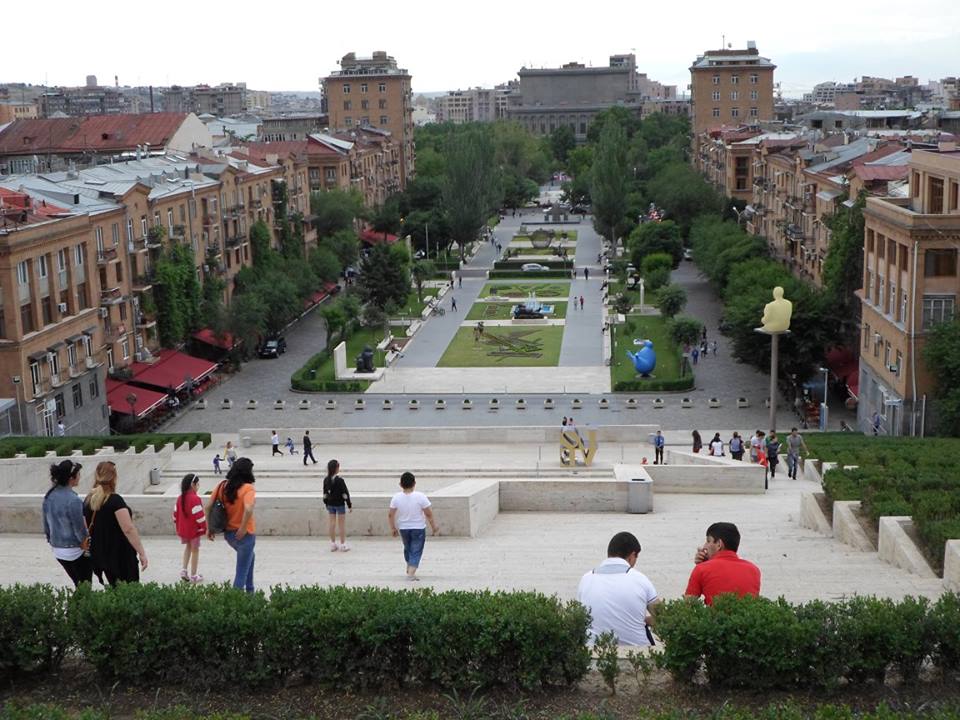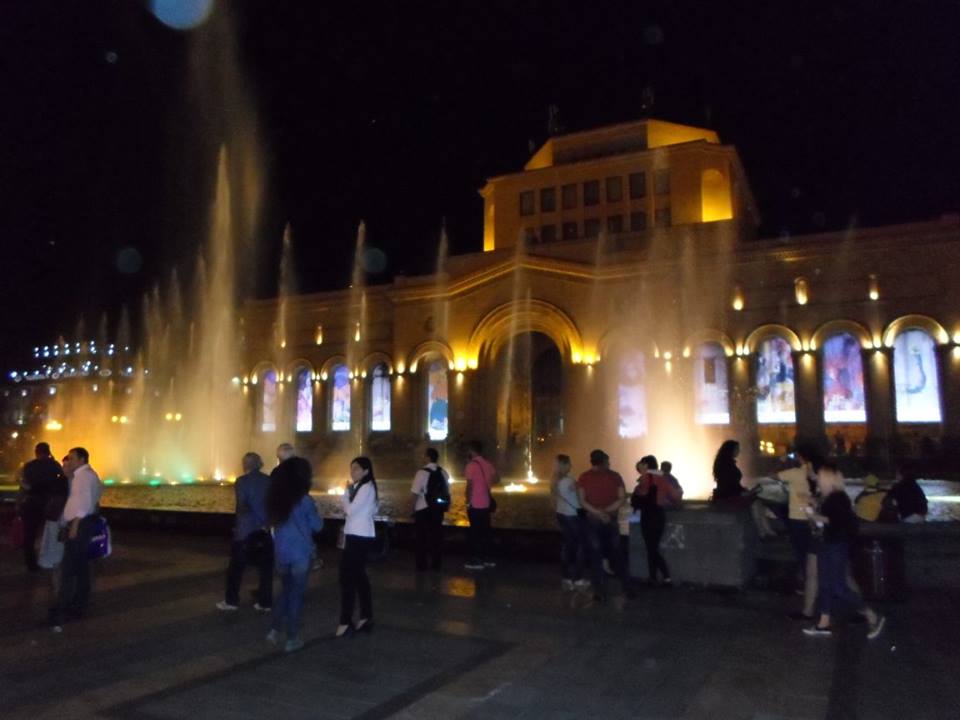Where to Stay: Guesthouses or Camping
Throught my trip, I stayed in guesthouses all over the country, from Yerevan, to Sevan, to Goris, and found each one to be incredible. This ranged from being given home-cooked breakfast every morning to free bottles of homemade wine, to comfortable beds, to help with anything you might need. Usually, the price was the same per person as a hostel, but instead of risking being stuck with a large group of 19-year-old dude, you’ll get a super nice local Armenian family. My advice would be to look on bookings.com
If you go into the countryside, it is very easy to camp out in many places. The temperature is usually warm and rain is infrequent so most of the time you don't need to worry about the elements. And although it may not be 100% legal, I've met several people who have camped inside historical sites and ancient churches without any problem.
Cost of Travel: Very affordable.
30 minute taxi ride - 1000 dram ($2)
Drink at a bar - 300-500 dram (60cents - $1)
Dinner at a descent restaurant - 2000-3000dram ($4-6)
Hostels (about 5000 dram ($10) per night
Tap Water: Great
The water is very safe to drink without risk. This is true both in Yerevan as well as throughout the country. There are even many public water fountains throughout the city that are kept clean and well maintained.
Communication: Mostly Armenian and Russian (a little English, but not much)
Having been part of the Soviet Union and since almost everyone in the country has family living in Russia, knowledge of the language is widespread and spoken by almost everyone. Because of this, almost everything is written both in Armenian and Russian, and since ties between the two countries are still pretty good, no one will be offended to speak Russian to you (as opposed to other former Soviet states like the Baltics). That said, knowledge of either Russian or Armenian (even if it is just a few basic phrases) is very beneficial since English is not widespread. In Yerevan, you may be able to find a few English speakers, such as at restaurants and in hostels, but outside the capital it is highly unlikely you'll find anyone who does.
Safety: Pretty safe
Even though this was the one place outside the US where someone tried to rob me (unsuccessfully, thankfully), the country is overall pretty safe. My incident occurred because I was wandering around alone in rural villages, oblivious to happenings around me. However, since me assailants were unarmed and about 6 inches (15cm) shorter than me, I was able to drive them away by shouting loudly and becoming very animated. Other than that, I had absolutely no trouble. I never saw any street crime happening and I felt pretty safe walking around Yerevan any time of the day or night.
Probably the biggest "danger" you would face is someone (most likely a taxi driver) trying to overcharge you or rip you off. Just use common sense and you'll be fine.
Transportation: No luxury but very cheap
Yerevan has the country's only metro with two lines. Quality isn't the best and sometimes you can wait a while for a train, but it only costs 100 dram (20 cents) to ride and it will get you from point A to point B. You can also go anywhere in the city by taxi for 1000 dram ($2) fairly quickly since the city is easy to navigate and not too congested. If a driver tried to charge you over 1000, he's ripping you off. Either haggle it down or go to the next driver.
You can also get just about anywhere in the country by taking a minibus or marshrutka from the main station (NAME) for less than 5000 dram (sometimes even less than 1000). And since Armenia is a small country, no trip will exceed 3 hours. You can also go to Tbilisi, Georgia for 8000dram ($16) which takes about 5 hours total. Keep in mind though, the buses and marshrutkas often wait until they're nearly full before they go, and often do not stick to the schedule.
Cultural Customs
Based on my experience, people were very hospitable and very direct (small talk is not really a thing). Expect some personal questions about who you are, why you're visiting, and what your life is like. In turn, most of the people will be eager to share something about their country with you. And unlike their neighboring Georgia, no one will be offended if you speak Russian to them, but much less people will know English.
Since there are not many foreigners visiting the country, there is a good chance someone (or a whole family) will invite you over for either coffee, food, or drinks. It is considered rather rude to refuse, so if you're not hungry or thirsty, just ask for a small portion or smaller shots of cognac.
Over 95% of the country is ethnically Armenian and Apostolic Christian, which is a bit unique compared to Catholicism, Protestantism and Orthodox Christianity. A lot of people, especially in the countryside, take pride in this as well as the fact that they were the first nation on earth to adopt Christianity as an official religion.
Do and Don't
DO
Visit as many historical sites as possible. Despite it's size, Armenia has some of the richest history of any place on earth.
Try the cognac (Ararat). It's the national drink of Armenia and the most affordable good cognac in the world (that's right France. I said it.)
Visit Khor Virap. The site in and of it's self is amazing and the backdrop of Mt. Ararat is unlike anything I've ever seen.
Walk to the top of the giant stairs in Yerevan and look out over the entire city.
Visit the dancing fountains at night.
See Lake Sevan and watch the mist roll down from the mountains to the water
Learn some phrases in Russian (or Armenian if you feel particularly adventurous) since English is not widely spoken.
Don't
Do not carry around anything with a Turkish flag. Tensions are still high due to the genocide and the border between the two countries remains closed even to this day.
Don't eat at restaurants with English names (or lettering). They are overpriced and of much lower quality than the local Armenian places.
Don't go on a trip in the summer without taking water with you. It's hard to find in some places and temperatures can often reach 38-40C (100F)
Don't get into a taxi without haggling a price. It is the common thing to do, so most drivers will start off by saying something far too high. You'll always be able to knock it down at least by a third.

























































